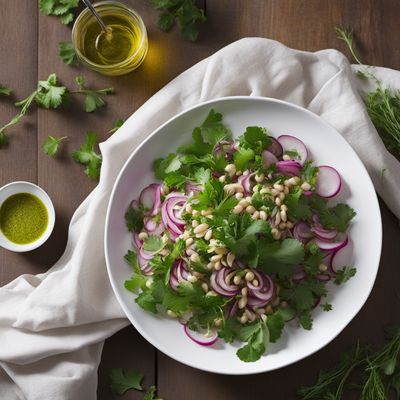
Cuisine
Saxon cuisine
Saxon cuisine is characterized by its use of local ingredients, such as potatoes, cabbage, and pork. The cuisine is known for its hearty and flavorful dishes, which are often served with a side of bread or potatoes. Saxon cuisine is also known for its use of spices and herbs, such as caraway, juniper berries, and thyme. The cuisine is typically served in large portions, making it a popular choice for those looking for a filling meal.
Typical ingredients
Potatoes, Cabbage, Pork, Beef, Sausages, Caraway, Juniper berries, Thyme, Onions, Garlic, Apples, Pears
Presentation and garnishing
Dishes are typically served in large portions and are often garnished with fresh herbs or vegetables. Bread or potatoes are often served as a side dish.
The region is known for its beer production, which is often used in the cuisine.
More cuisines from this region...
Swabian cuisine, Bavarian cuisine, Hamburg cuisine, Pomeranian cuisine, Schleswig-Holstein cuisine, Silesian cuisine, Rhenish-Hessian cuisine, Brandenburg cuisine, Mecklenburg cuisine, Palatine cuisine
History
Saxon cuisine has a long history that dates back to the Middle Ages. The cuisine was heavily influenced by the local agriculture and the availability of ingredients. The cuisine was also influenced by the various cultures that inhabited the region over the centuries, including the Romans, the Celts, and the Slavs. Today, Saxon cuisine is still popular in the region and is enjoyed by locals and tourists alike.
Cultural significance
Saxon cuisine is an important part of the local culture and is often served at festivals and celebrations. The cuisine is also known for its use of local beers, which are often paired with the dishes.
Health benefits and considerations
Saxon cuisine is high in calories and fat, so it should be enjoyed in moderation. However, the cuisine is also rich in nutrients, such as protein, fiber, and vitamins.
Saxon cuisine recipes Browse all »

Saxon-style Country Carrots
Hearty Carrots with a Saxon Twist

Saxon-style Potato Croquettes
Saxon Delight: Crispy Potato Croquettes with a Twist

Saxon Trifle
Royal Delight: Saxon Trifle - A Regal Twist to a Classic Italian Dessert

Saxon-style Roman Chicken
Saxon-Inspired Roman Chicken: A Fusion of Flavors

Saxon-style Pallares Salad
Hearty White Bean Salad with Saxon Flair

Saxon-Style Steamed Cheeseburger
Savory Steamed Delight: Saxon-Style Cheeseburger

Saxon-style Stuffed Zucchini Blossoms
Saxon Delight: Stuffed Zucchini Blossoms with a Twist

Saxon-style Almond Cookies
Delightful Almond Treats: Saxon-style Almond Cookies

Saxon-style Asparagus Frittata
Saxon Delight: Asparagus Frittata with a Twist

Saxon-style Red Bean Stew
Hearty Saxon Red Bean Stew: A Fusion of Flavors

Saxon-style Potato Dumplings
Hearty Potato Delights: Saxon-style Dumplings

Saxon-style Meeshay
Savory Saxon Noodle Delight